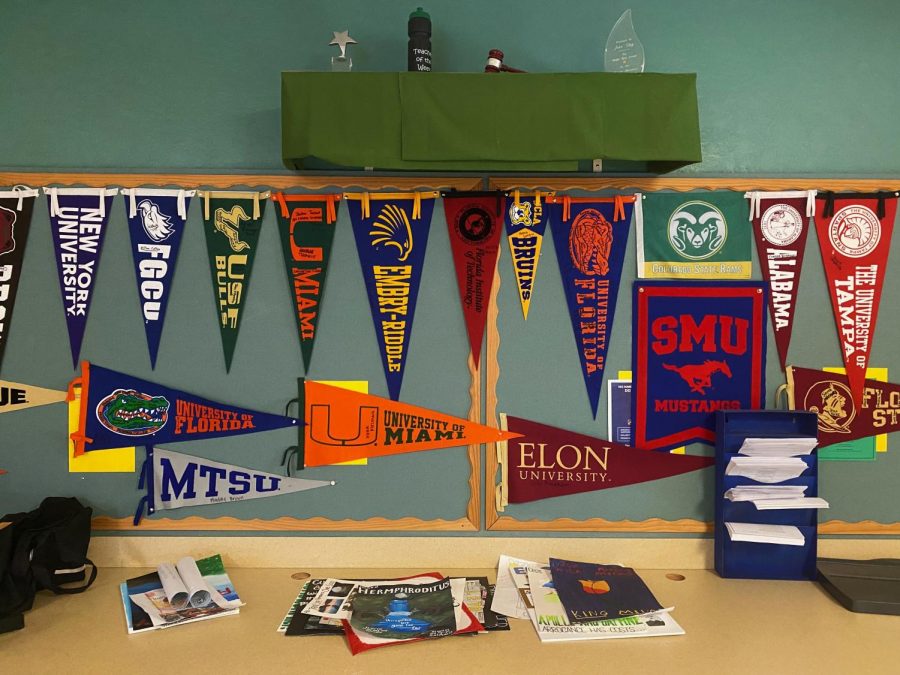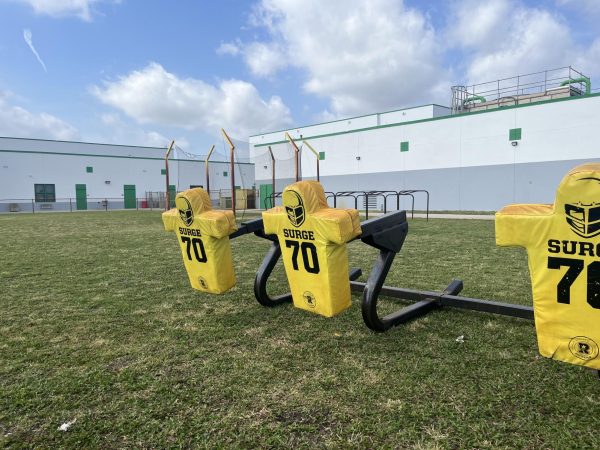What you need to know about AICE/AP/Dual Enrollment
Students are in the process of choosing their classes for the 2021-2022 school year through their district portal on the SIS Gateway. There are a variety of college-levels courses available including AICE, AP, and dual enrollment. Here are tips to help students with their classes next year.
AICE
The Advanced International Certificate of Education is implemented by Cambridge University in the U.K. The program offers an array of advanced-level courses where students can earn college credits during their high school years.
“Choosing the best AICE classes to take really depends on the goals of the student,” Amber Saunders, JHS AICE Coordinator, said. “When choosing classes, the first thing to consider is what is of most interest to [the] particular student.”
In order to obtain the AICE diploma, students must meet a variety of requirements. A student must obtain seven AICE credits in a span of three years. One of those credits must be Global Perspectives AS level. Students usually take this class their sophomore or junior year.
“For ninth graders, typically they would take AICE General Paper and consider other AICE electives we offer in their area of interest,” Saunders said.
Students in their sophomore year looking to earn the AICE diploma can take English Language AS, better known as AICE Lang, along with Global Perspectives AS, International History AS or other AICE electives.
“Eleventh graders trying to wrap up the AICE Diploma have a lot of flexibility in course choice,” Saunders said.
There are four groups from which to obtain credits from. Group one is Mathematics and Sciences and includes Marine Science and Math. Group two is Language and includes English Language and Spanish. Group three is Arts and Humanities which includes Classical Studies and Digital Media and Design. Group four is optional but includes General Paper and Thinking skills. AICE Global Perspectives AS level is considered separate but it is required for the diploma.
“At this point, it’s important for the student to revisit the AICE diploma requirements on our site and make sure they are taking courses/passing exams in the necessary categories to earn the AICE diploma,” Saunders said.
The AICE diploma guarantees students with a Florida Bright Futures scholarship, which can help students pay for college if they go to an in-state university.
According to Saunders, the AICE diploma guarantees the top level of the Bright Futures scholarship, Florida Academic Scholars Award, without needing a 1330 on the SAT or a 3.5 GPA.
Dual Enrollment
Students interested in dual enrollment must be at least 16 years old, have a 3.0 weighted GPA, have PSAT, SAT, ACT, or PERT test scores, attend a mandatory orientation, complete the Free Application for Federal Student Aid (FAFSA) application and apply to the college.
“The dual enrollment program is an opportunity to take challenging courses and accelerate education opportunities,” Holly DeCabia, JHS school counselor, said.
Students can dual enroll at Palm Beach State College or Florida Atlantic University. Because of COVID-19 a large number of the classes offered have moved online with Zoom meetings or online assignments.
“One of the biggest advantages of dual enrollment is that students are able to experience the dynamics of a college classroom before actually entering college,” DeCabia said.
Dual enrollment classes can offer students both high school and college credit, and the classes are ranked on the same AICE and AP grading scale: 6.0 GPA for an A. Schools in Fla. are likely to accept dual enrollment credits compared to out-of-state institutions.
“Students who successfully complete dual enrollment courses will save time toward their college degree and save money with free tuition and textbooks,” DeCabia said.
For PBSC, there is a page dedicated to dual enrollment course equivalency for those who are looking to obtain high school diploma requirements through dual enrollment. This means that you can obtain an English credit from the college instead of the high school.
“Earn high school credit and college credit simultaneously…the school district [will pay] for it…take courses we may not offer,” DeCabia said.
School counselors recommend students use Rate My Professor to help you choose classes to take. Registration for dual enrollment began March 23. Use this link for more information on dual enrollment. https://sites.google.com/palmbeachschools.org/jhscollege/college-and-more?authuser=0
Advanced Placement (AP)
AP classes are offered by the College Board and can help students earn college credit. AP classes are more widely recognized across institutions in the country compared to AICE and dual enrollment.
“AP is pretty safe in terms of…it’s widely accepted everywhere,” Kelly Foss, JHS AP Coordinator, said.
AP classes can help students receive credit for General Education courses in college, and possibly their planned degree choice.
“I think a student would want to take [AP sciences]…most likely you are college bound, and you are interested in some kind of field that’s either math, science, engineering related,” Foss said.
Students interested in STEM can benefit from taking AP sciences. AP science courses have a higher course load than other AP classes.
“Colleges for the most part do not have a problem giving you credit for the course because they know what was taught,” Foss said.
Dual enrollment through PBSC and AICE courses are great options for colleges in-state. However, if you plan to go out-of-state then you will have an easier time gaining credit for your AP courses.
Foss elaborates that AP is a standardized curriculum, which means that even if you take it at a different school, like Florida Virtual, you will still receive the same credit.











